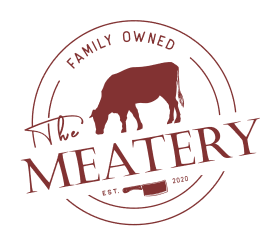Wagyu beef has become synonymous with luxury dining, often celebrated for its extraordinary taste and texture. However, misconceptions still abound. In this detailed blog, we'll clarify the most common myths surrounding Wagyu beef, explain why it commands premium pricing, and discuss how to appreciate this exceptional culinary treasure fully.
What Part of the Cow is Wagyu?
One of the biggest misconceptions is that "Wagyu" refers to a specific cut. Actually, "Wagyu" translates literally to "Japanese cow," encompassing four primary Japanese cattle breeds:
-
Japanese Black (Kuroge)
-
Japanese Brown (Akage)
-
Japanese Polled (Mukaku)
-
Japanese Shorthorn (Nihon Tankaku)
Wagyu beef includes cuts from all parts of the cow—ribeye, sirloin, brisket, filet, and even ground beef. What makes Wagyu extraordinary is not the specific cut but its unparalleled genetic ability to produce richly marbled meat. This marbling, fine webs of intramuscular fat, imparts unique tenderness, flavor, and juiciness.
The most prized Wagyu cuts are from the rib and loin areas, but even traditionally cheaper cuts, like chuck or flank, become premium offerings due to Wagyu’s exceptional marbling.
Understanding Wagyu Beef Grading
Japanese Wagyu beef undergoes stringent grading evaluating marbling, color, firmness, texture, and fat quality. Grades range from A1 to A5, with A5 representing the highest marbling and overall quality. This system helps consumers identify genuine premium Wagyu beef.
Comparing Wagyu to Other Types of Beef
Wagyu differs significantly from other beef types such as USDA Prime Angus or grass-fed beef. The distinction lies in marbling patterns, flavor complexity, and nutritional profile.
-
Marbling: Wagyu’s marbling is incredibly fine and evenly distributed, creating unmatched tenderness and juiciness.
-
Flavor: Wagyu offers a buttery, sweet, umami-rich experience unlike the robust, beefy flavor of Angus or the earthy taste of grass-fed beef.
-
Nutrition: Despite its higher fat content, Wagyu fat is predominantly monounsaturated, containing oleic acid, a heart-healthy fat similar to olive oil.
Authenticity and Provenance of Japanese Wagyu
Authenticity is crucial when purchasing Wagyu beef. True Japanese Wagyu is rigorously tracked by the Japanese government. Each cow has a unique 10-digit ID number documenting lineage, diet, and farm location. Premium Wagyu-producing regions include:
-
Kobe: Hyogo Prefecture, renowned globally.
-
Matsusaka: Exclusively uses virgin cows for exceptional tenderness.
-
Omi: The oldest Wagyu tradition, producing sweet-flavored beef.
-
Miyazaki: Famous for balanced marbling and meat quality.
Is Wagyu Better Than Filet Mignon?
This title is confusing as comparing Wagyu to filet mignon can be misleading. Wagyu is a breed, while filet mignon is a specific cut (tenderloin). Wagyu filet mignon merges the tenderness of filet with the unique flavor of Wagyu. Generally:
-
Choose traditional filet mignon for unparalleled tenderness and lean meat.
-
Opt for a Wagyu ribeye or strip for unmatched flavor complexity and marbling.
-
And get a Wagyu filet mignon for the best of both worlds: tender and flavorful.
Why is Wagyu Beef So Expensive?
Several factors contribute to Wagyu’s premium price:
-
Exclusive Genetics: Strictly controlled breeding and export limits.
-
Extended Raising Period: Longer lives significantly increase care and feed costs.
-
Specialized Diets: Tailored nutrition ensures optimal marbling.
-
Limited Yield: Only certain cuts reach the coveted high grades.
-
International Shipping and Regulation: Imported Wagyu faces strict quality inspections, costly logistics, and import tariffs.
These elements combine to make authentic Wagyu beef one of the world’s priciest proteins, justified by the unparalleled culinary experience (Let TheMeatery be your one-stop shop for Wagyu steaks delivered to your doorstep!
Cooking the Perfect Wagyu Steak
Cooking Wagyu demands precision and simplicity:
-
Allow steak to reach room temperature for even cooking.
-
Season LIGHTLY with kosher salt and pepper just before cooking if you want the full flavor profile to come out.
-
Use a medium-hot cast-iron pan—no added fat needed.
-
Cook quickly, flipping frequently, aiming for rare to medium-rare (120-130°F).
-
Rest for 5-10 minutes, then slice thinly against the grain.
Serve modest portions, as it is extremely rich and complex, appreciating each bite to fully savor Wagyu’s luxurious texture and rich flavor.
Is Wagyu Beef Just Fat?
Contrary to myths, Wagyu isn’t simply fatty meat. Its intricate marbling consists mostly of beneficial monounsaturated fats and oleic acid, contributing to health benefits and unmatched flavor.
Wagyu’s intramuscular fat melts at lower temperatures, creating its distinctive buttery mouthfeel and richness without the heavy, greasy sensation of regular beef fat. Thus, Wagyu offers an optimal balance of taste, tenderness, and nutritional quality.
Final Thoughts: Appreciating Wagyu Beef
Wagyu beef represents the epitome of culinary artistry—a harmonious blend of careful breeding, meticulous raising practices, and culinary craftsmanship. By understanding and dispelling myths surrounding Wagyu, consumers can better appreciate its value, authenticity, and exceptional quality.
Whether you're an avid steak enthusiast or new to the Wagyu experience, tasting genuine Wagyu beef is an unparalleled gourmet journey worth savoring. For authentic, high-quality Wagyu beef, visit TheMeatery.com and explore their premium selections.









